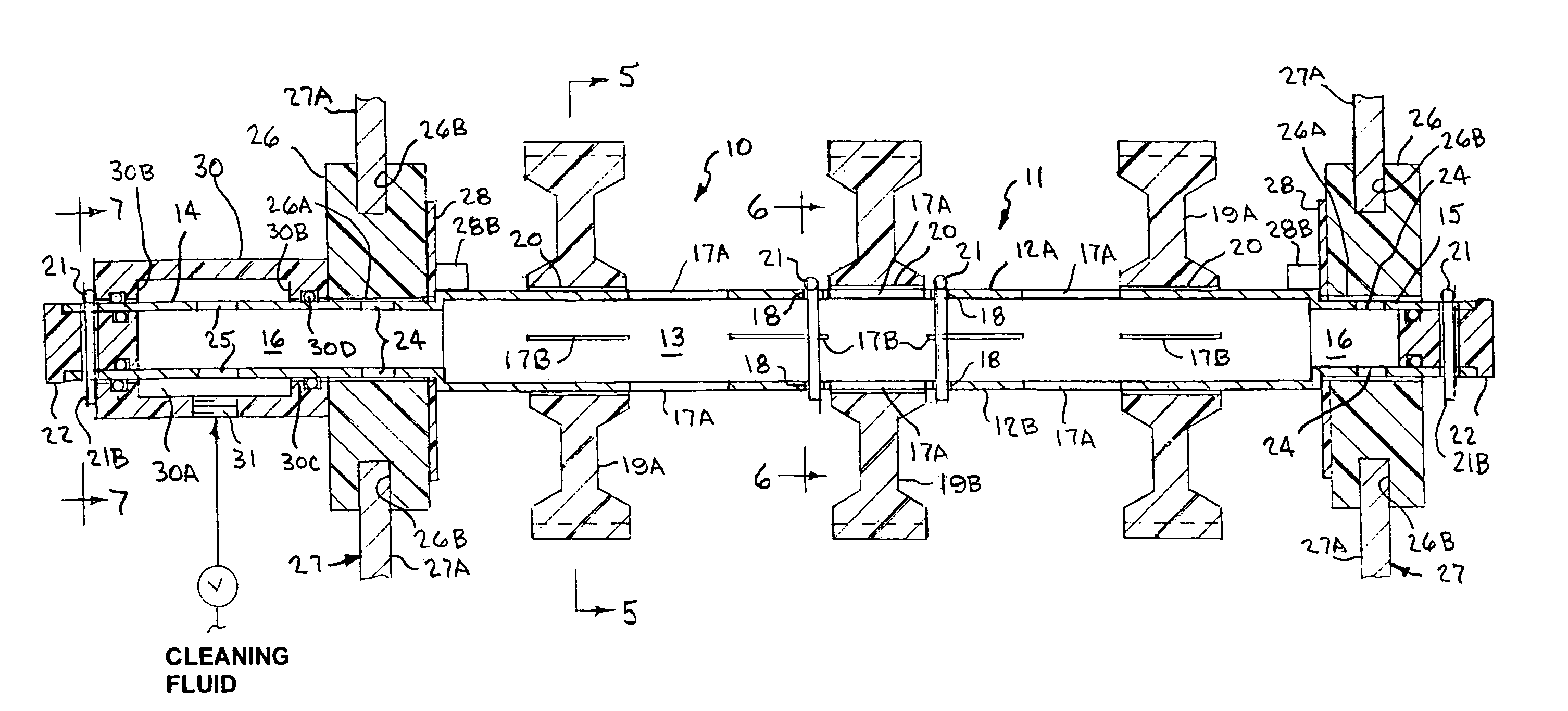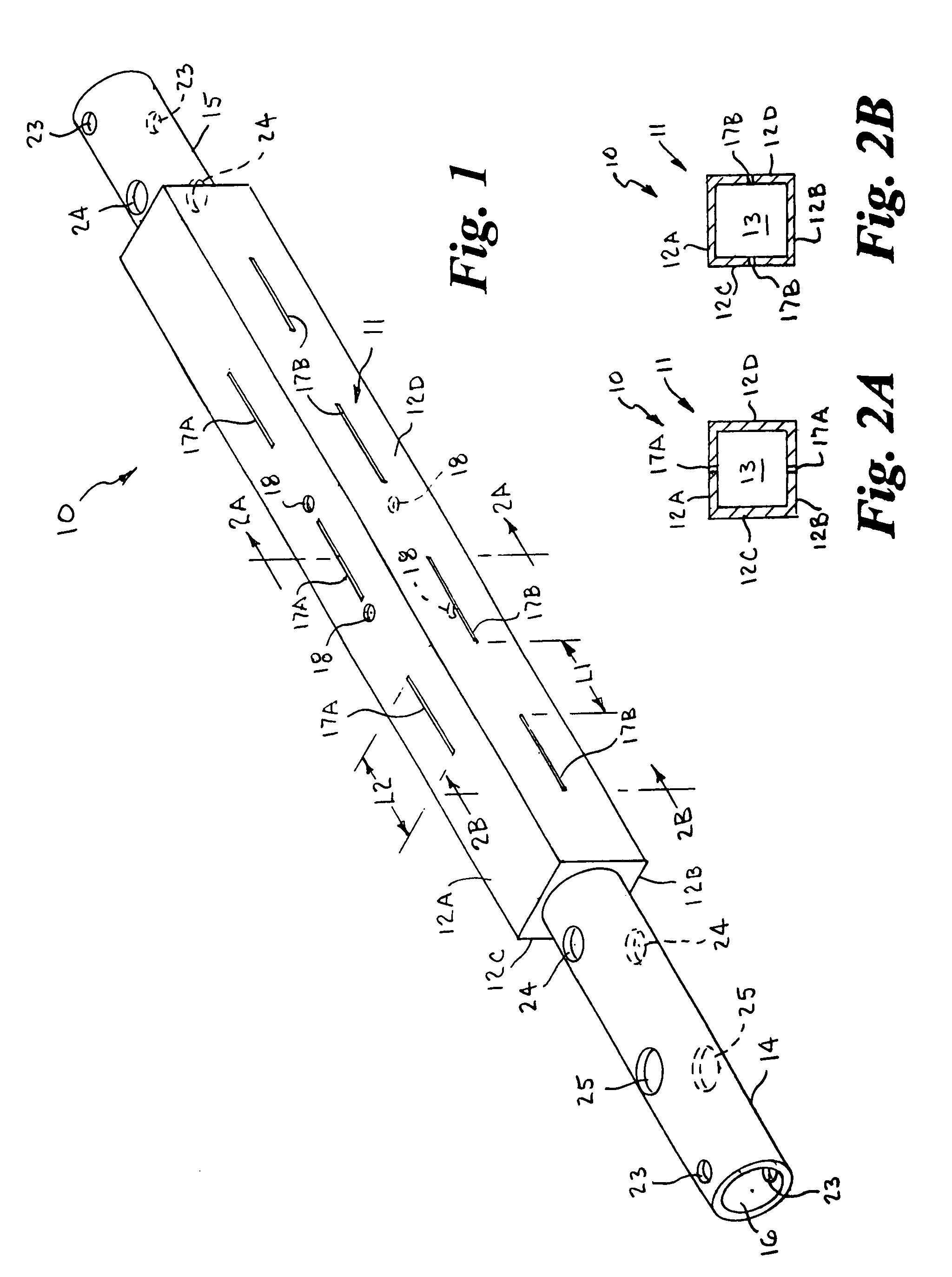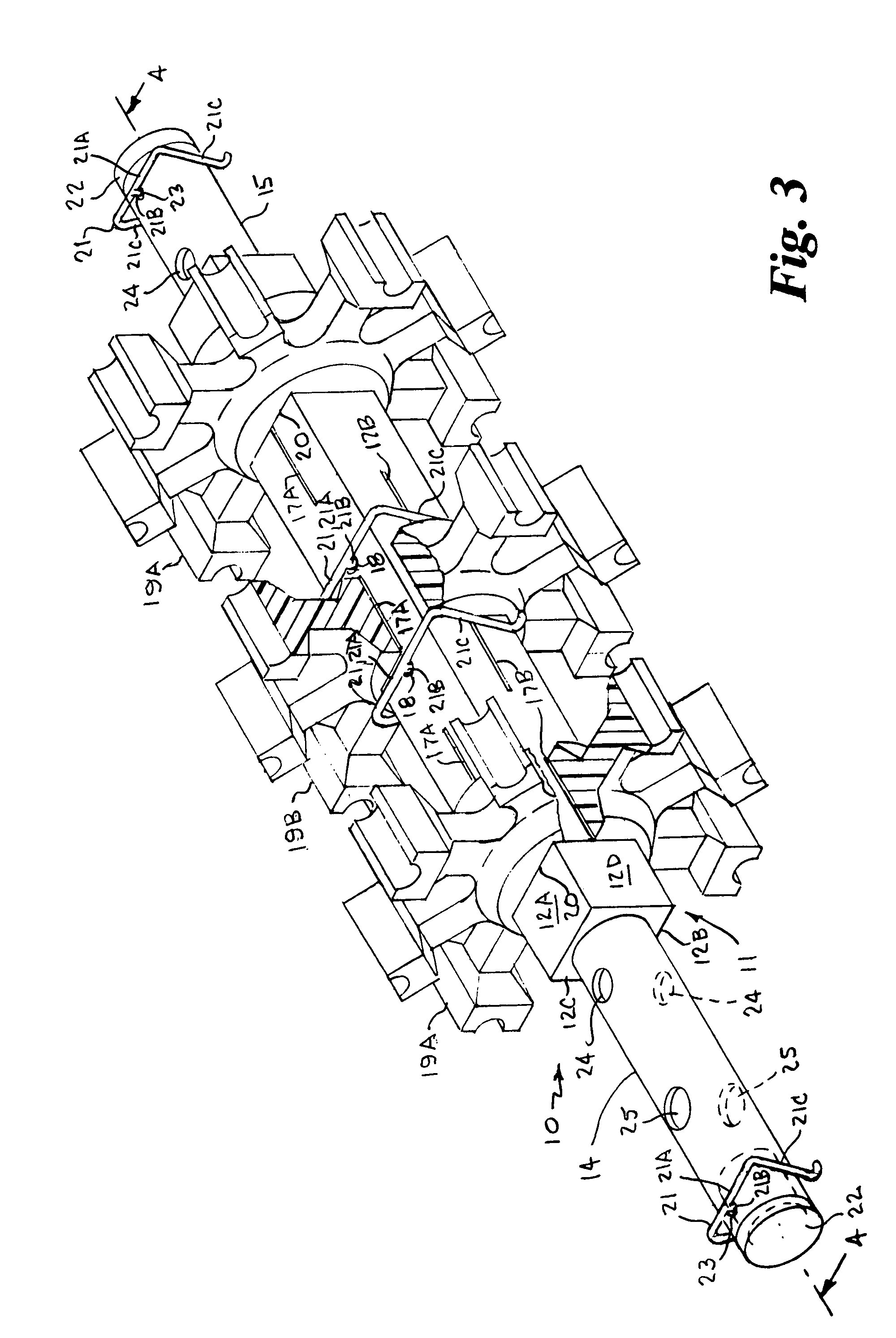Nozzleless conveyor belt and sprocket cleaning shaft
a conveyor belt and nozzleless technology, applied in the direction of cleaning process and equipment, cleaning using liquids, chemistry apparatus and processes, etc., can solve the problems of affecting the operation of equipmen
- Summary
- Abstract
- Description
- Claims
- Application Information
AI Technical Summary
Benefits of technology
Problems solved by technology
Method used
Image
Examples
Embodiment Construction
[0037]Referring to the drawings by numerals of reference, there is shown in FIGS. 1, 2A and 2B, a preferred nozzleless belt-cleaning sprocket support shaft 10 for cleaning endless conveyor belts and the sprockets supported thereon. The sprocket support shaft 10 has an elongate hollow midsection or central portion 11 of square transverse cross section with parallel spaced opposed side walls 12A, 12B, 12C and 12D, defining a central interior chamber 13, and cylindrical opposed ends 14 and 15 extending axially outward therefrom. One cylindrical end 14 is longer than the other end 15. A central bore 16 extends axially through the opposed cylindrical ends 14, 15 in communication with the interior chamber 13 of the hollow central portion 11.
[0038]A plurality of elongate narrow slits 17A and 27B are formed in the side walls 12A, 12B, 12C and 12D in longitudinally spaced apart relation along the length of the square midsection or central portion 11. The slits 17A of two opposed side walls 1...
PUM
 Login to View More
Login to View More Abstract
Description
Claims
Application Information
 Login to View More
Login to View More - R&D
- Intellectual Property
- Life Sciences
- Materials
- Tech Scout
- Unparalleled Data Quality
- Higher Quality Content
- 60% Fewer Hallucinations
Browse by: Latest US Patents, China's latest patents, Technical Efficacy Thesaurus, Application Domain, Technology Topic, Popular Technical Reports.
© 2025 PatSnap. All rights reserved.Legal|Privacy policy|Modern Slavery Act Transparency Statement|Sitemap|About US| Contact US: help@patsnap.com



